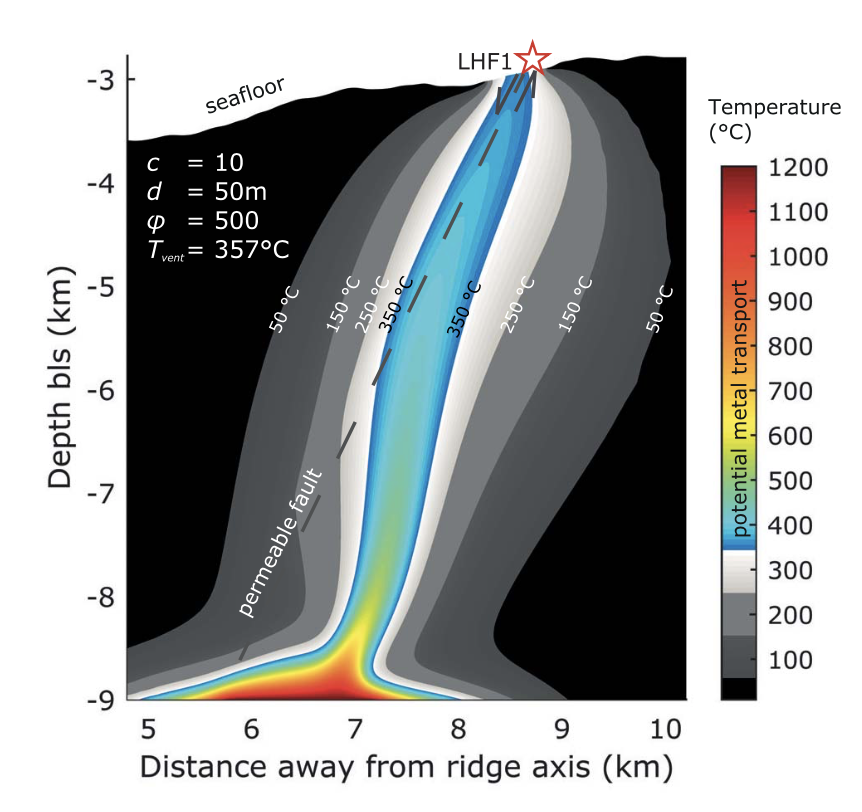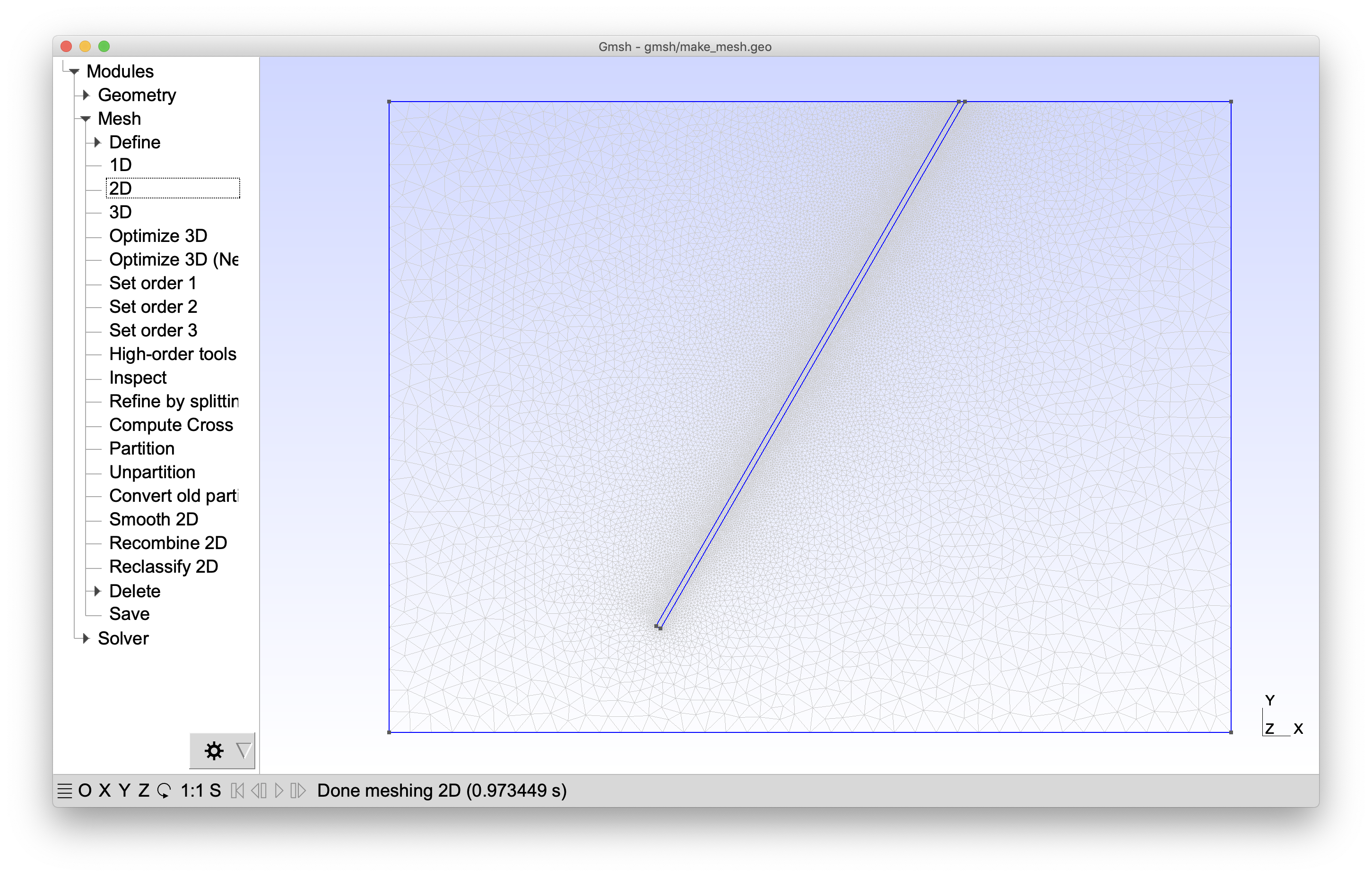Project 1: Flow along a detachment fault
Project objectives
Explore hydrothermal flow along fault zones
Find which faults capture a rising plume and which do not
Understand how fault zone properties affect vent temperature
The first project builds upon lecture 3 on Structural controls on hydrothermal flow. We will explore under which conditions hydrothermal upflow can be “captured” by an inclined fault zone of enhanced permeability.

Fig. 48 Figure taken from [Andersen et al., 2017] ; preferential fluid flow along a fault zone.
Deliverables
The goal of this project is to provide work on these topics
Plume captureing, provide a sequence of 2D simulations that illustrate what can “happen” for different fault widths and fault permeabilities (check Fig. 29)
Systematics, provide a “phase diagram” for fault width and fault permeability that illustrates the regime when the pume is captured by the fault zone.
Vent temperature, provide information on the relationship between the fault’s ability to capture a plume and the resulting vent temperature.
The results should be delivered in a short powerpoint presentation.
Starting point
Case file
Download the basic case file from (Fault Flow Model).. It includes a basic setup for a fault-controlled hydrothermal system.
Meshing software
The example case uses a meshing software called Gmsh to create a mesh that resolves the fault zone. Gmsh is already installed within your docker containers, so there should be no need for installing additional software. The gmsh input file is in gmsh/make_mesh.geo.

Fig. 49 Mesh created with gmsh.
Have a look at gmsh/make_mesh.geo and the Gmsh . Check that you (more or less) understand what’s happening and try to change things like fault width and and angle.
Post-processing
There are many ways of extracting information from a completed run. For this project, you will want to know how high the vent temperature is and where the venting occurs, so that you can evaluate if the plume was “captured” by the fault. You can either do this in paraview by using, for example, the “Plot Over Line” filter in Paraview. An alternative is to use the built-in postprocessing function of OpenFoam.
postProcess -func sampleDict -latestTime
It will read the system/sampleDict file (have a look!) and extract T along a line.
More powerful is, of course, to use python, like in Upflow temperatures in submarine hydrothermal systems.
Background reading
[Andersen et al., 2015] illustrates the problem for the Logatchev field
[Driesner, 2010a] explains relationship between vent temperature and permeability
[deMartin et al., 2007] background paper on detachment faulting at the TAG vent field
[McCaig et al., 2007] [McCaig et al., 2010] more paper on fluid flow along detachments
[Escartin et al., 2008] classic paper on oceanic detachments